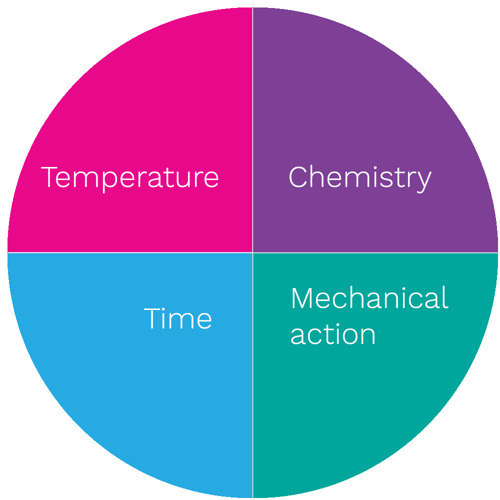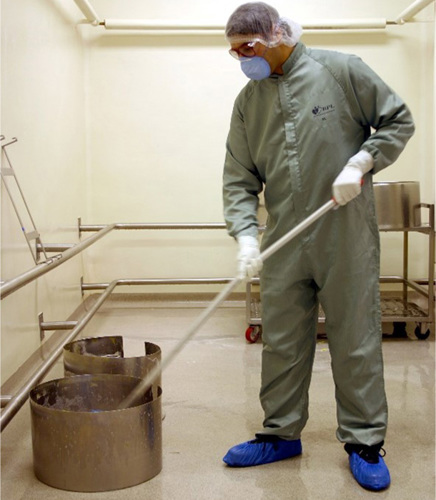The reason Q10 matters is because disinfectant standards (including the European Norms) require disinfectant activity to be assessed at a temperature of 20oC ±1oC. This means the given concentration for the recommended contact time will be for what needs to be applied under standard ‘room temperature’ conditions. However, the contact times will theoretically be faster or slower at different temperatures. While certain items of equipment will be functioning at temperatures above 30oC, cleanrooms will not (not least given that the conditions will become impossible to work in and cleanroom suits would no longer function as an effective filter). However, cold rooms are commonplace in pharmaceutical facilities.
While the risk of microbial contamination is somewhat lower, the presence of psychrotolerant (having the characteristic to grow near 0 °C but with their optima lying in mesophilic range) and psychrophilic organisms, provides a continuing challenge (6). This challenge requires regular cleaning and disinfection and under these circumstances, the Q10 factor is likely to apply, leading to the disinfectant contact times needing to be increased.
The issue of disinfectant compatibility and cold temperatures can be further complicated by the activities of different agents and different surface materials.
Moving forwards: Cold room disinfection
In order to use disinfectants effectively, facilities operating cold areas need to understand how their disinfectants are affected and what adjustments are required. Adjustments include overcoming any limitation due to low temperatures by adjusting disinfectant concentrations or using longer contact times. If either of these two options cannot be undertaken, then the final recourse is with the selection of a new disinfectant. Alternatively, some facilities have attempted to mix disinfectants with antifreeze with variables results (7).
Summary
The temperature at which a disinfectant is used is an important factor for when it is used outside ambient conditions. Additional efficacy studies may be required, or advice sought from disinfectant manufacturers in order to optimise disinfectant use in cold areas. This is especially important when optimising contact time and disinfectant concentration.



